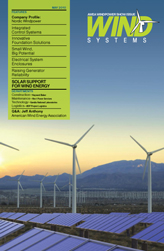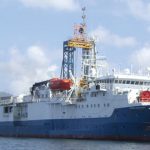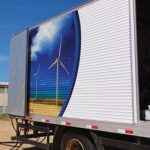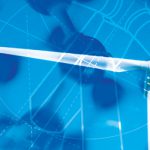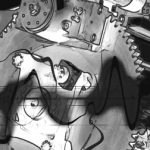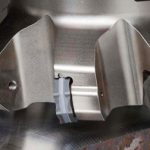From blade manufacturers and wind farm designers to wind turbine operators and power providers, the companies involved in the production of wind energy have very different production applications. Yet both the personnel behind the blade production machinery and those responsible for wind turbine controls are tasked with similar goals: They must keep safety, reliability, and maintenance at the forefront to help their companies—and their customers—succeed. Key to accomplishing these goals is leveraging an integrated control solution.
The Rockwell Automation Integrated Architecture™ system provides that solution, integrating motion, sequential, safety, and power control on a single platform, all networked over EtherNet/IP for improved data communication and remote troubleshooting capabilities. Before discussing the system’s attributes and capabilities, allow us to provide a real-world example of how one company is benefiting from this technology.
Case History
Founded more than 13 years ago, Tecsis Tecnologia e Sistemas Avançados is dedicated to manufacturing blades for wind turbines. Tecsis is the only 100 percent Brazilian-owned company currently producing this type of blade. It exports all of its products, which are manufactured at its own production sites located in the city of Sorocaba, 96 km from São Paulo. Currently the company produces more than 12,000 blades, which have been installed in more than 10 countries in Europe (Spain, Ireland, and Greece) and North America (the United States and Canada), as well as in Australia and Japan, among other countries.
Tecsis ships its blades to clients from the port of Santos, some 70 km from São Paulo. Due to the length and weight of the blades, transporting them requires complex logistics. They are moved from Sorocaba to Santos in convoys of 25 to 30 trucks that pass through the capital and descend from the mountains during the nighttime hours. To prepare the blades for loading in ships, they are placed in special packing to protect the product to make it easier to transport and move them.
The Challenge
The length of the Tecsis blades varies from 37 to 50 m, and weigh from between 6 to 12 tons. However, before initiating the manufacturing process itself, Tecsis develops a specific design for the molds based on a detailed profile to meet the customer’s specific needs. The profile is determined by each customer’s specific design and depends on the location where the wind turbines will be erected. Each project is therefore unique. “This requires the manufacturing of specific equipment and tools, as well as carrying out the necessary tests to put the product into production, which can take months,” according to Aureo de Oliveira, electrical engineer coordinator at Tecsis. “Despite being highly ‘engineered’ in initial stages, the manufacturing of the blade is done completely by hand and requires about 24 hours.”
Each blade is manufactured in a die, also produced by Tecsis, in which layers of materials are applied. Modern wind turbines are made up of three blades, manufactured with reinforced plastic (polyester and epoxy) and fiberglass. Other materials are also used such as carbon fiber, steel, aluminum, textile fibers, wood, and wood epoxy. The blades must be lightweight, resistant, and rotate easily to withstand winds that can reach 180 km/h. Although the blades are able to stand up to these wind speeds, the wind turbines normally operate at winds up to 90 km/h. Any higher speed will shut down the system, and the generation of power will be cut off as a safety measure to protect the structure.
Two key factors are responsible for keeping the blades lightweight and resistant: the temperature of the material that is applied to the mold, and the amount of time that this material is exposed to that temperature.
The Solution
Automation of the heating system plays an important role in the final solution because it allows precise temperature control throughout the entire process, eliminating safety and quality deviations. However, the system used by Tecsis did not meet all of the company’s needs. Aureo explains how control was handled, and what the difficulties were. “Control and handling of the heating process data were limited because control was done individually by heat section, which made it difficult to balance the temperature between the controlled points,” he says. “In addition, the generated reports did not provide information to track the heating process variables in real time, or to create production history. It wasn’t possible to compare the temperature of the control zones and the different areas, which would require more homogeneous temperature stabilization in the mold.”
With the CompactLogix controllers and RSViewSE Stand-Alone software, Tecsis was able to reduce mold assembly time, increase panel installation reliability, and allow employees to dedicate more time to other applications, in addition to decreasing indirect project costs.
The Results
In practice, the system is simple: There are dozens of temperature measurement points (thermocouplers) for each mold. The signals emitted by the thermocouplers are transmitted to the CompactLogix PAC, which receives information about the temperature of each point and activates heating when needed. The need to heat each point at a lesser or greater degree is determined by the temperature profiles that control these variables throughout all production stages of the blade. Each customer has a unique design based on the process conditions of each blade, and the temperature curves change for each customer. In this regard Tecsis also obtained a degree of autonomy, because its own technicians defined the system parameters for the curves.
“We plan to apply Rockwell Automation controls to all systems where electric control of temperatures is required because the application is easy and configurable, and it reduces maintenance,” says Aureo, emphasizing “the excellent service, information security, and broad product knowledge” he enjoys while working with the Rockwell Automation team of engineers.
The Details
After companies like Tecsis manufacture blades and other turbine components, wind-farm designers and turbine OEMs can leverage the same scalable Integrated Architecture system for all of their control needs, including:
• Pitch control systems to position the blades and spill wind when the turbine is operating above the rated wind speed, while also maximizing power output;
• Yaw control systems including across-the-line starters, soft starters, or variable frequency drives to keep the turbine facing the wind;
• Main control systems to calculate the power optimization algorithms based on available wind, pitch angle, and blade geometry. This system then sends a set point to the generator or grid tie inverter and can provide for many startup and shutdown safety checks as well;
• Condition-monitoring systems to monitor vibration on the main drive shaft bearings, as well as each gearbox and generator bearing.
Standardized Safety
In each of these applications, as in the manufacture of the blades themselves, safety is critical to protect both people and the large capital investment that a turbine represents. Any diagnostic failure would typically force the wind turbine into a shutdown mode, which commands the blades to a shutdown position.
An extremely important safety consideration for wind turbine manufacturers is overspeed protection. The turbine control system should include a safety-rated circuit to monitor both the high-speed and low-speed ends of the gearbox and hub, and help avoid reaching a specified rotational speed. If the limit is reached, the circuit can initiate a shutdown sequence, protecting the turbine and any people on or near the equipment. In the past decade, safety-based control has made its way into manufacturing and assembly equipment controls designs. Similarly, wind turbine control designs are adopting many of the same safety design practices.
Improved Reliability
Wind turbines, particularly those located offshore, also require a control system with excellent reliablity that will stand up to the high-temperature and harsh, corrosive environments that exist out at sea. Controllers designed using hardened components suited for rugged environments can help provide OEMs and wind-power providers with excellent reliability and reduced panel costs. In addition, operational costs and carbon emissions are reduced because these controllers do not require the additional installation and energy costs associated with auxiliary heating and cooling systems.
Reliability also can be improved through predictive maintenance solutions. With the application of condition monitoring technologies such as vibration analysis, wind turbine operators can detect problems early, identify the cause, and take corrective action, all with minimal impact on energy production. This also helps optimize maintenance planning and costs.
Easier Maintenance
Unexpected shutdowns and maintenance of any kind can represent significant investments of time and capital. An integrated control system that is networked over EtherNet/IP can provide wind-power companies with remote-monitoring capabilities on the same platform as the standard control. This provides a smaller physical footprint with improved diagnostic and troubleshooting capabilities.
A commercially available, off-the-shelf solution like the Integrated Architecture system from Rockwell Automation helps reduce training needs and spare part requirements, offering global support no matter where the turbine is installed. In addition, with more utility companies using similar integrated control systems in their facilities, wind-power providers can more easily integrate with their systems to supply wind-generated power to customers around the globe.
From end to end, companies across the range of wind-system applications are taking advantage of integrated control solutions to help standardize safety, improve reliability, and reduce maintenance concerns. Learn more about Rockwell Automation’s solution by visiting www.rockwellautomation.com/solutions/integratedarchitecture/index.html.



















